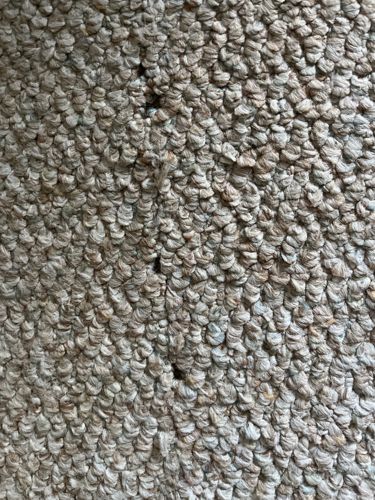Carpet Beetle (likely Varied Carpet Beetle or Black Carpet Beetle)
Scientific Name: There are several common species, including 'Anthrenus verbasci' (Varied Carpet Beetle) or 'Attagenus unicolor' (Black Carpet Beetle). Without a clearer view of the insect, a specific species cannot be determined definitively from the provided image fragments, which appear to show very small, dark specs possibly related to the carpet or the pest itself, but not a clear image of the pest.
Order & Family: Coleoptera, Dermestidae
Size: Adults typically range from 2-5 mm (approximately 0.08-0.2 inches). Larvae are usually slightly larger, up to 4-5 mm, and are typically covered in bristles.

Natural Habitat
Indoors, especially in undisturbed areas where natural fibers and animal products are present. This includes carpets, rugs, woolen fabrics, upholstered furniture, clothing, furs, taxidermy, museum specimens, and sometimes even in pantries where they feed on dry goods. Adults are often found outdoors on flowers feeding on pollen and nectar.
Diet & Feeding
Larvae feed on a variety of animal-based materials including wool, felt, furs, feathers, leather, animal bristles (e.g., in brushes), silk, and pet hair. They can also consume stored dry food products like cereals and dried pet food.
Behavior Patterns
Carpet beetle larvae prefer dark, undisturbed areas. They are often found in closets, drawers, under furniture, or in vents. They are slow-moving and can be elusive, often going unnoticed until damage is significant. Adults are attracted to light and are often found near windows. The larvae are the destructive stage, feeding on natural fibers.
Risks & Benefits
Risks: Economically damaging household pests that can destroy natural fiber products (clothing, carpets, furniture), furs, and stored foods. Some individuals may experience skin irritation or allergic reactions from bristles shed by the larvae. Benefits: In nature, they play a role as scavengers break down dead animal matter, but this is outweighed by their pest status in human environments.
Identified on: 8/11/2025